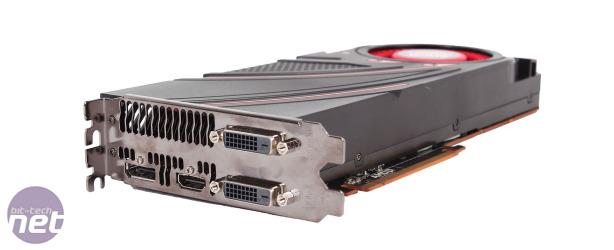Performance Analysis
The first thing to note is that there is only ever a very small difference between Uber Mode and Quiet Mode using the R9 290X 4GB. The slightly lowered fan speed rarely causes dips in performance of more than 1 or 2 frames, with the exception to this being Crysis 3 at 1080p, where we get a 5fps difference. There's also less than a 3 percent difference between the two modes in Unigine. The card is noticeably quieter in Quiet Mode, so for many this will be an acceptable trade off. The rest of our performance discussion, however, focuses on Uber Mode.In Battlefield 3 the R9 290X 4GB has a very slight edge on the GTX 780 3GB at every one of the main resolutions. However, AMD's new card really comes into its own at 4K resolutions here. The fact that's it's able to keep this still demanding game running at 30fps is an achievement by itself, but its 15 percent advantage over the GTX 780 3GB is even better, and shows that its higher ROP count and frame buffer aren't for nothing. Other patterns we see in Battlefield 3 are that GTX Titan only leads the R9 290X 4GB by about 9 percent, while the latter card has a massive 40 percent or so lead over its sibling, the R9 280X 3GB.
AMD cards tend to have an advantage in BioShock at the moment, and indeed the R9 290X 4GB does very well compared to the GTX 780 3GB in each of the single screen tests, including 4K where the difference between them is the difference between playable and unplayable. The green team is able to match the R9 290X 4GB across three screens though. Performance is again rather close to GTX Titan, while margins on the R9 280X are always at least 30 percent too.
This general performance pattern is repeated in both Crysis 3 and Skyrim, with the new AMD GPU consistently holding a slight edge on the GTX 780, falling only a little behind the GTX Titan and being notably faster than the R9 280X 3GB. At 4K in Crysis 3, neither card tested is able to keep things playable, even without anti-aliasing, but in Skyrim both cards manage it with ease, with the R9 290X 4GB coming out ahead by 8 percent.
Our Unigine benchmark seems to favour Nvidia's hardware at the moment, as this is the only performance test where the R9 290X 4GB isn't able to outperform the GTX 780 3GB, instead losing out by 7 percent. Compared to other cards in AMD's product stack, it's about 18 percent behind the dual GPU HD 7990 6GB and 36 percent ahead of the R9 280X 3GB.
The card's power draw really isn't a great showing, however, as it has the highest idle and load results of any single GPU card. The simple truth is that AMD's GCN architecture is less efficient than Nvidia's Kepler one. Not only does our system power draw reach 82W more when using the R9 290X 4GB compared to the GTX 780 3GB, but the card's 426W result is even higher than the GTX 690 4GB, a card that has two GPUs.
The high power draw may also have something to do with the card's high temperature, as these are also the highest we've yet seen. However, this does come with the caveat that the card deliberately targets the 95°C mark by default, hence the delta T results of around 70°C once you've accounted for the ambient temperature. As for the idle readings, we typically take these after the load ones after a period of 5 minutes or so of inactivity. The card's fan profile is such that it typically drops very quickly to its lowest point of 20 percent speed once load is removed. The 95°C target means the card has no motivation to cool down any quicker than this, so temperatures fell more slowly than we're used to seeing.
Another point worth mentioning with regards to heat is that in Uber Mode, after our Unigine stress test, the fan speed had plateaued at 45 percent, which is relatively high given that this was only keeping the GPU at 90-95°C. In Quiet Mode, meanwhile, where the fan is limited to 40 percent, clock speeds had to be sacrificed for the target temperature to be maintained. We typically saw it dropping to between 900MHz and 950MHz.
Our overclocking efforts were generally well rewarded, especially in Battlefield 3 where the R9 290X 4GB actually surpasses GTX Titan at stock speeds; not bad considering that the latter is over £300 more expensive. In Crysis 3 our 12 percent overclock gave us a 9 percent performance boost, while the Unigine score actually increased by 13 percent. We also quickly reran our 4K Battlefield 3 test, where the card jumped from a 30fps minimum to a 33fps one.

MSI MPG Velox 100R Chassis Review
October 14 2021 | 15:04










Want to comment? Please log in.